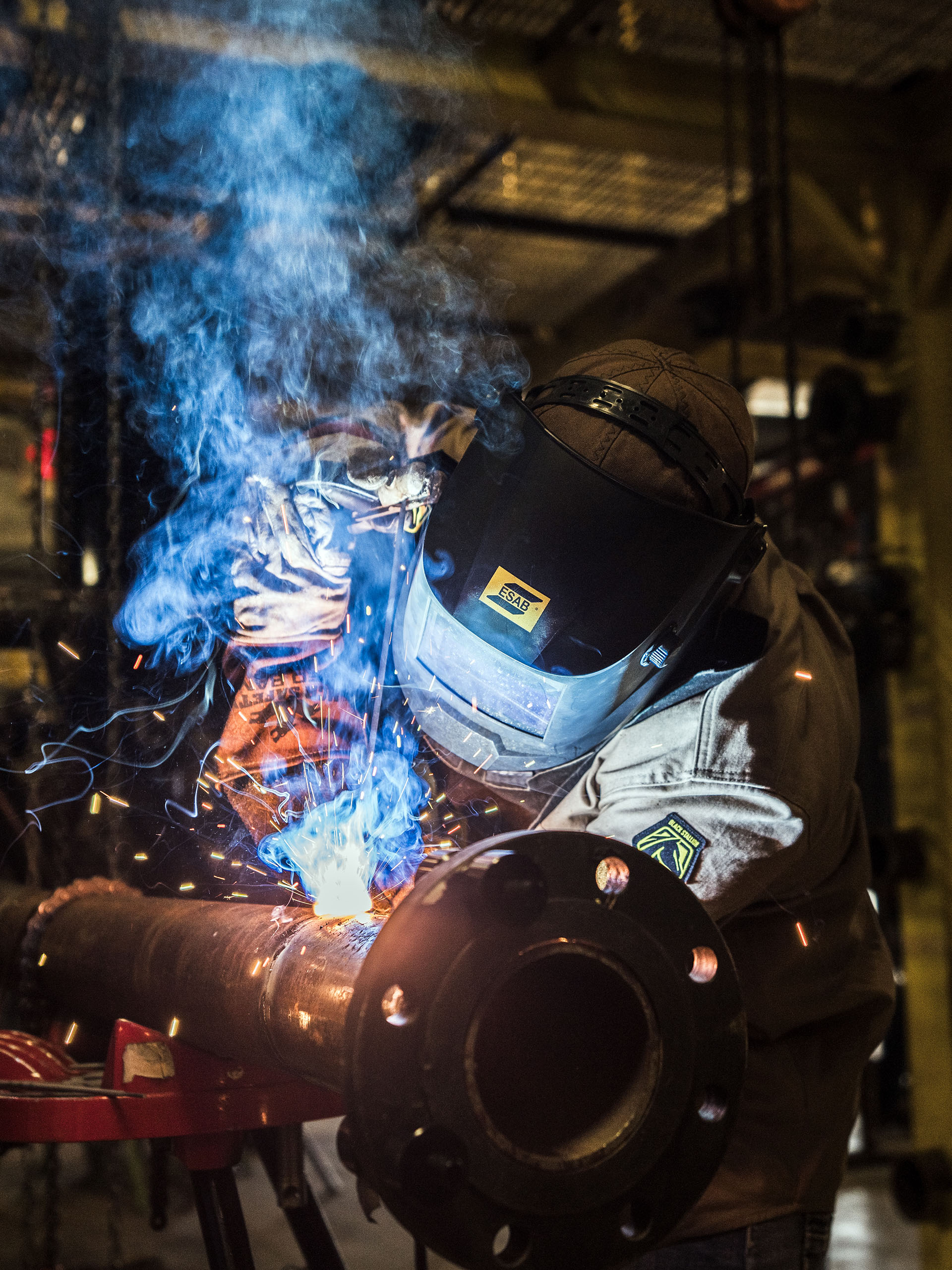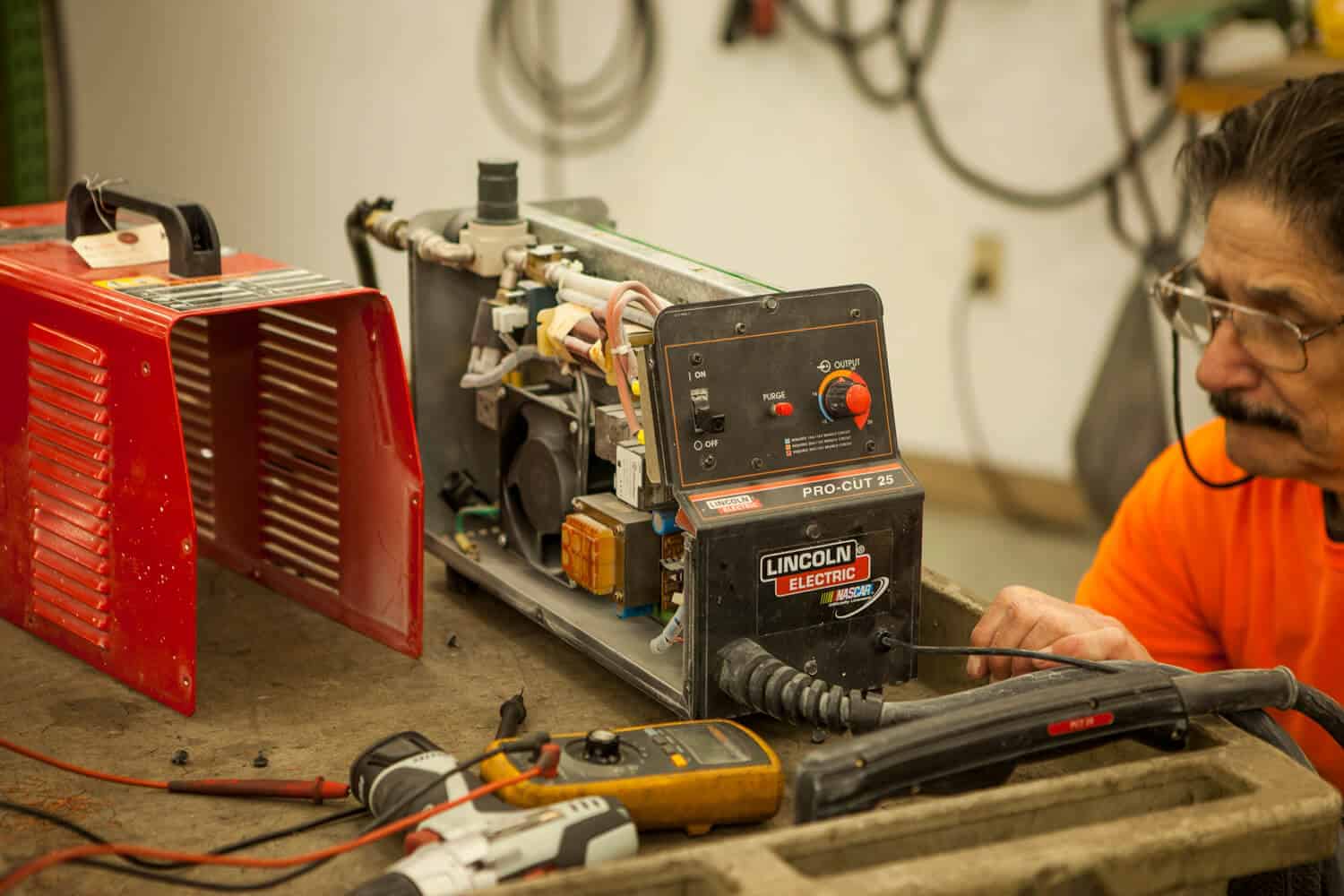All About Welding: Secret Insights Into Techniques and Finest Practices for Success
Welding incorporates a variety of strategies, each suited for certain products and applications. Understanding these approaches, such as GMAW, SMAW, and TIG, is vital for attaining optimal results. The best devices and security practices can not be overlooked. As prep work and repairing play important duties in the welding procedure, understanding these components can considerably improve the quality of the end product. What are the essential elements that guarantee an effective weld?
Recognizing Various Welding Methods
Welding techniques include a range of methods, each fit to details applications and products. Among the most typical techniques are Gas Steel Arc Welding (GMAW), Secured Metal Arc Welding (SMAW), and Tungsten Inert Gas Welding (TIG) GMAW, additionally called MIG welding, is popular for its rate and convenience, making it ideal for slim materials. SMAW, or stick welding, is preferred for its simpleness and efficiency in outdoor settings, specifically with thicker steels. TIG welding offers accuracy and control, making it appropriate for elaborate work and non-ferrous metals (Montana Mobile Welding and Repair Belgrade Welding). Each strategy has its distinct benefits and factors to consider, enabling welders to choose the best technique based upon the job's requirements, material type, and wanted results. Comprehending these techniques is crucial for effective welding
Crucial Welding Devices and Devices
While different welding methods call for particular skills, the appropriate tools and devices are just as vital for achieving top quality results. Vital welding tools includes welding equipments, which differ depending on the strategy-- such as MIG, TIG, or stick welding. Safety gear, consisting of gloves, headgears, and aprons, guarantees safety and security and convenience throughout the procedure. Furthermore, clamps and components assist safeguard materials in place, making sure precision in welds. Consumables like welding poles, cable, and shielding gas are additionally important parts that influence the quality of the weld. Tools such as cutters and grinders facilitate surface area prep work and post-weld finishing, adding to an expert result. Buying high-grade tools ultimately enhances the effectiveness and efficiency of welding projects.
Safety And Security Practices in Welding
Appropriate safety methods are vital in the welding sector to protect workers from potential dangers. Welders should put on proper individual protective devices (PPE), including headgears with correct shading, handwear covers, and flame-resistant clothes. Sufficient ventilation is essential to decrease exposure to damaging fumes and gases generated throughout the welding procedure. Furthermore, employees must be learnt the appropriate handling of welding tools to avoid mishaps. Fire safety measures, such as keeping combustible materials away from the welding area and having fire extinguishers conveniently available, are necessary. Regular examinations of tools and offices can aid determine prospective risks prior to they lead to crashes. By adhering to these safety techniques, welders can create a more secure working environment and reduce risks related to their trade.
Readying Products for Welding
Preparing materials for welding is a vital step that substantially influences the high quality and honesty of the end product (Belgrade Fabrication). Correct preparation involves cleaning the surface areas to eliminate impurities such as dirt, oil, and corrosion, which can jeopardize the weld. Techniques such as grinding, sanding, or making use of solvents are frequently utilized to attain a tidy surface area. Additionally, making sure that the products mesh well is essential; spaces can cause weak welds. It's additionally important to take into account the alignment and positioning of the components, as this will certainly affect the simplicity of welding and the final end result. Ultimately, choosing the proper filler product and making sure compatibility with the base metals is essential for achieving strong, durable welds
Tips for Achieving High-Quality Welds
Attaining top notch welds calls for attention to detail and adherence to finest practices throughout the welding procedure. Appropriate joint prep work is important, ensuring surface areas are clean and free from contaminants. Picking the appropriate filler product and welding technique based on the base metals is vital for ideal bonding. Maintaining consistent travel speed and angle while welding can promote and stop problems harmony. Additionally, managing warm input is essential; too much warmth can result in warping and damaged joints. If necessary, consistently inspecting the welds throughout the procedure permits for immediate changes. Finally, using ideal post-weld therapies, such as cleaning and stress and anxiety relief, can enhance the resilience and honesty of the weld, inevitably making sure an effective result.
Troubleshooting Typical Welding Issues
Welding often presents challenges that can impact the top quality and stability of the end product. Typical concerns such as porosity, irregular weld beads, and overheating can occur, each requiring specific repairing methods. Recognizing these problems is important for welders to improve their abilities and attain optimal results.
Porosity Problems Clarified
Although porosity can frequently be overlooked, it remains a crucial concern in welding that can endanger the stability of an ended up product. Porosity refers to the presence of small gas pockets within the weld bead, which can damage the joint and lead to premature failing. This trouble normally emerges from impurities, moisture, or improper securing gas coverage throughout the welding process. To mitigate porosity, welders ought to validate that the base products are tidy and dry, make use of appropriate securing gases, and keep constant welding specifications. Frequently checking the tools and environment can also help recognize potential concerns before they manifest find more information in the weld. Resolving porosity efficiently is vital for achieving solid, resilient welds that meet quality criteria.

Inconsistent Weld Beads
Inconsistent weld beads can substantially impact the top quality and stamina of a finished item. Numerous factors add to this concern, consisting of inappropriate travel rate, inaccurate amperage setups, and irregular electrode angles. When the welder relocates also promptly, a bead might appear narrow and lack infiltration, while relocating too gradually can create excessive build-up. Additionally, making use of the incorrect amperage can result in either damaging or too much spatter, both of which compromise weld stability. The welder's strategy, such as irregular lantern movement, can additionally lead to irregular bead appearance. To mitigate these troubles, welders ought to concentrate on keeping stable, regulated movements and making sure appropriate tools settings to achieve uniformity in their welds. Uniformity is vital to accomplishing reputable and solid welds.
Getting Too Hot and Bending Issues
Excessive warm during the welding process can result in significant overheating and contorting problems, affecting the architectural stability of the work surface. These troubles commonly show up as distortion, which can endanger placement and fit-up, making more assembly challenging. Variables adding to overheating consist of the selection of welding parameters, such as voltage and take a trip rate, as well as the kind of material being welded. To alleviate these problems, welders need to keep constant travel speed and ideal warmth input while keeping track of the workpiece temperature. Furthermore, preheating or post-weld warmth therapy can assist minimize tensions brought on by fast air conditioning - Montana Mobile Welding and Repair. Routine inspection and adherence to finest practices are necessary in avoiding overheating and guaranteeing the longevity and integrity of welded structures
Regularly Asked Questions
What Are the Profession Opportunities in the Welding Industry?
The welding sector provides varied job opportunities, consisting of placements as welders, teachers, assessors, and engineers. Professionals can function in manufacturing, building and construction, aerospace, and auto fields, profiting from solid need and competitive salaries in different duties.
How Can I Enhance My Welding Rate Without Compromising Quality?
To enhance welding speed without compromising top quality, one ought to practice efficient strategies, maintain equipment, optimize settings, and improve hand-eye coordination. Regular training and seeking comments can likewise substantially add to accomplishing quicker, premium welds.
What Accreditations Are Available for Welders?
Many accreditations exist for welders, including those from the American Welding Culture (AWS), the National Center explanation for Construction Education And Learning and Research Study (NCCER), and numerous industry-specific companies. These qualifications boost employability and demonstrate ability proficiency.
Exactly How Does Welding Impact the Features of Metals?
Welding affects the properties of steels by altering their microstructure, which can result in modifications in firmness, ductility, and toughness. Warmth input and cooling rates during the procedure greatly influence these material characteristics.
Can I Bonded Dissimilar Metals With Each Other?
